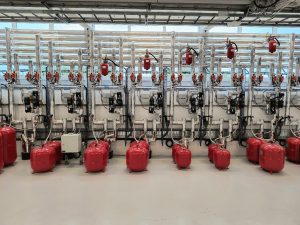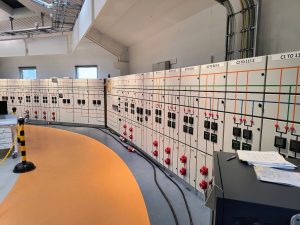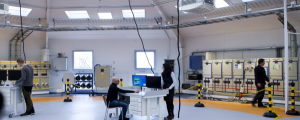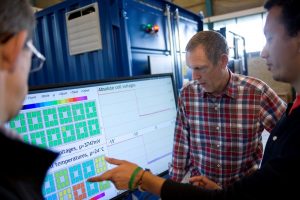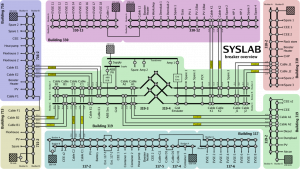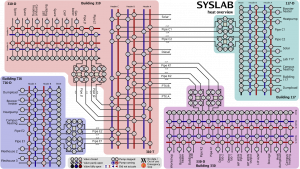DTU PowerLabDK SYSLAB
TA29 – DTU-SYSLAB+RisøHPP-SYSLAB
Location
DTU Risø Campus, Frederiksborgvej 399, Bygn. 330, Postcenter 8
4000 Roskilde, Denmark

Description
SYSLAB is a highly observable, highly automated, sector coupled energy system research facility designed as a testbed for control and communication concepts for electrical and multi-carrier energy systems. It combines a complex physical energy system with a platform for the rapid deployment of different types of control algorithms. A 27-busbar electrical distribution grid and a district heating network with 15 header lines form the backbone of the system, allowing interconnections between approximately 40 DER units (production, consumption, storage) in a large variety of system topologies.
All DER units as well as the grid substations are fully automated and can be remotely monitored and controlled through a unified software API, allowing for the testing of a wide range of energy management and control concepts as well as for automated test execution, automated parameter tuning etc.
The facility is spread across six different buildings within an area of about 1km².

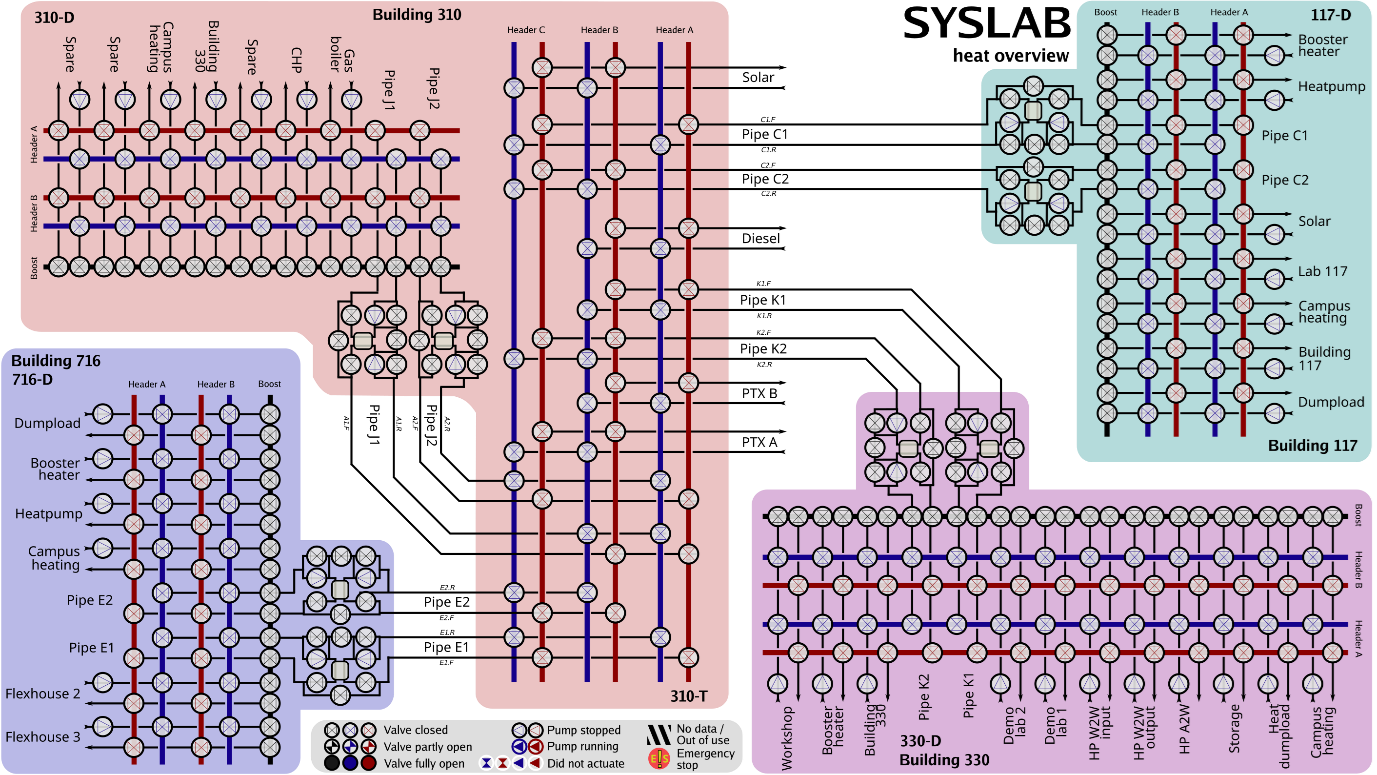
Testing Capabilities
SYSLAB can be used for application-oriented testing of software interfaces, control algorithms, control software, as well as the physical and software integration of new energy conversion and control devices. The wide range of resources, infrastructure and its configurability also facilitate specialised data collection campaigns to improve modeling and model validation for new devices or complex settings, for example, of sector coupling technologies or district heat networks. The automation level of SYSLAB ensures rapid deployment and a high number of test samples even over multiple complex system configurations across energy domains.
SYSLAB is highly suited for rapid prototyping and maturing of control software coded in, for example Python or MATLAB, and it is unique in its ability to support the deployment of fully distributed control systems. This applies especially to novel energy system architectures, including peer-to-peer, cell-based and hierarchical coordination schemes.
Examples for control software testing on the application field for active distribution networks have been reported in (Gehrke et al., 2021), including performance assessment of centralised, distributed or peer-to-peer voltage controllers, the system integration and validation of a multi-stakeholder flexibility scheme, or a novel cell-based load frequency control concept. Other typical use cases include plant-controller testing for microgrids, hybrid power plant schemes as well as component characterisation and data collection for modelling purposes.
Further application fields supported by this infrastructure include: Sector coupling, load flexibility, aggregation and demand flexibility, Electric Vehicle (EV) integration and charging infrastructure, electricity distribution networks, district heating networks, hybrid power plants, hybrid energy storage and energy communities.
Technical Equipment
SYSLAB has a large variety of DER units, including electrical generation (from wind, PV, diesel, natural gas), electrical consumption (smart buildings, Electric Vehicle Supply Equipments (EVSEs), programmable loads), electricity storage (vanadium and lithium batteries), power electronic converters (grid emulators, load emulators), thermal generation (electrical boiler, heat pump, CHP), thermal consumption (smart buildings, regular buildings, programmable load) and thermal storage tanks. The units are interconnected by an electrical 400V, three-phase grid with a combined cable length of 8km, and a district heating network with 4.5km of twin pipe.
In order to adapt to many different testing scenarios, the electrical grid and thermal network have highly flexible network topologies, all aspects of which (circuit breakers, valves, pumps) can be controlled by user software. This allows for the emulation of different kinds of real-world network topologies, such as long rural feeders, branched urban networks, islanded networks etc. The maximum configurable electrical feeder length is just above 3km, and the maximum configurable district heating line length is about 2.5km. SYSLAB can operate in islanded mode or be supplied from the distribution network on Risø campus through seven different points with different impedances.
Every energy resource in SYSLAB - producers, consumers, storage, grid/network infrastructure - has its own Linux-based controller node, with no implicit assumption about the relationship between nodes. This provides flexibility for realizing different control topologies. Currently, the facility can be directly interfaced using Java, Matlab, Python or Web services (REST).
The typical size of DER units in SYSLAB is in the range of 10 to 125kVA electrical and 10 to 150kW thermal power.
Additional information
Technology Readiness Level: 4-6
Special considerations: N/A
Technology clusters: Energy Storage, Information and Communication Technologies, Integrated Grids, Others
Website: https://www.powerlab.dk/facilities/syslab
Availability: Available year-round, subject to agreement/scheduling.
Provision of tools to prepare data sets in a FAIR way: Yes

